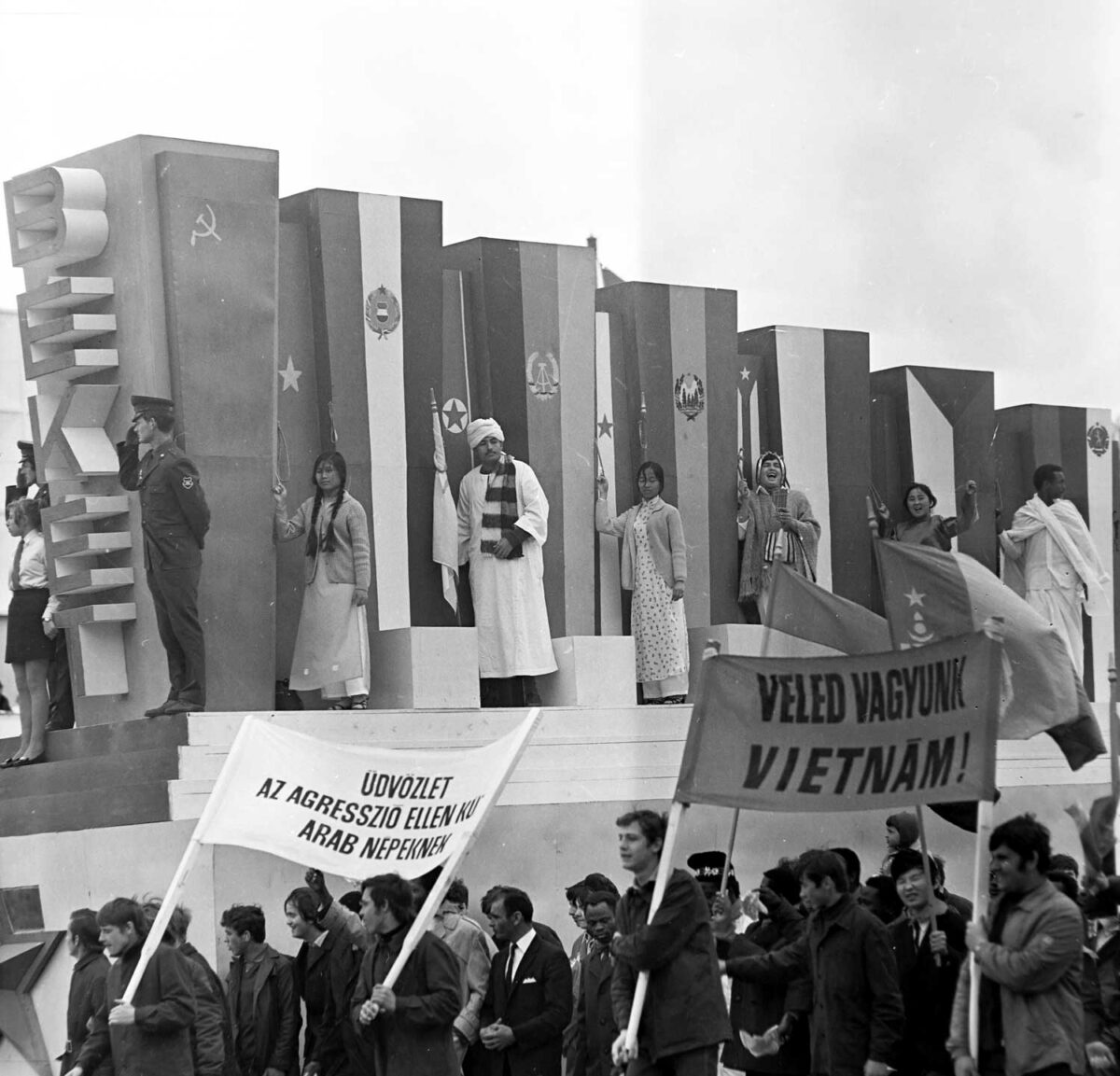Note from LeftEast editors: This article is a version of an interview Bence Horváth conducted in Hungarian with Zoltán Ginelli and Eszter Szakács, published by 444.hu on 24 May, 2021. It has been translated and re-edited by Zoltán Ginelli. The original introduced the exhibition ‘Transperiphery Movement: Global Eastern Europe and Global South’ featured in the OFF-Biennale Budapest and the Kyiv Biennial in 2021. Zoltán Ginelli’s exhibited work was part of the Socialism Goes Global project.
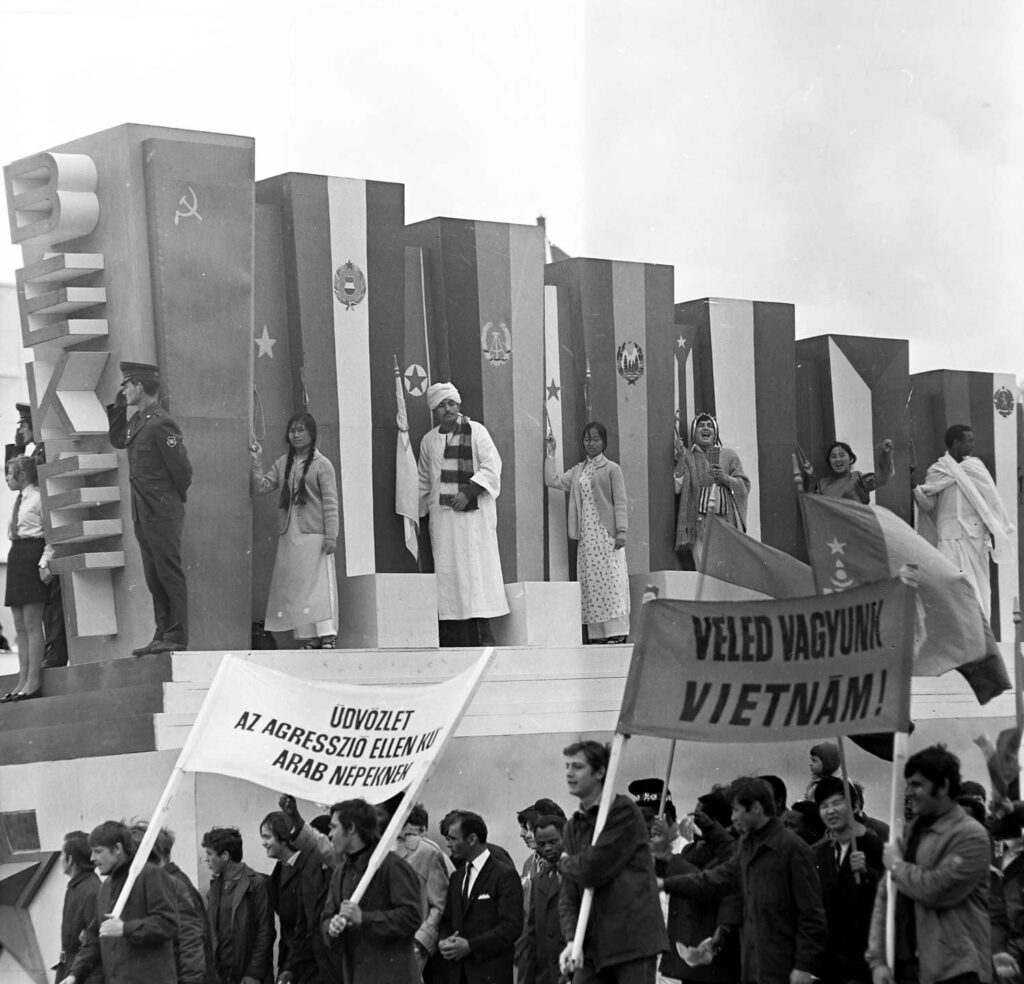
How does the story of Hungarian settlers in South America or Cuban workers in Hungary fit in with the well-known narratives of Hungarian history? What did India have to do with the events of the 1956 revolution in Hungary, or how was the famous Jewish poet Miklós Radnóti related to Pan-African literature? How was Hungarian underground art, the work of Artpool, related to Latin American conceptual art in the 1980s? These and many other, similarly intriguing questions were addressed by the Transperiphery Movement exhibition, which could be seen at the Fészek Artists’ Club between 13 and 30 May 2021 within the framework of the OFF-Biennale Budapest and can be followed on the project’s website, which is continuously being updated.
According to the event’s website, “the exhibition looks at the historical relationships and parallels between the global periphery (Global South) and semiperiphery (Eastern Europe) in the 20th century through the concepts of coloniality, peripherality, and migration.” The two curators of the Transperiphery Movement, Zoltán Ginelli and Eszter Szakács, told us about what this means and how new perspectives can be applied to understand global history.
The work of the Transperiphery Movement is closely linked to world-systems theory, which argues that global processes should be examined not primarily at the level of nation-states, but from a long-term historical perspective that looks at the global logics behind the hierarchical capitalist division of labor, into which countries integrate as either part of the global core, semi-periphery, or periphery based on their position in this system of capital accumulation. This global historical approach allows for a different historiography, one that does not focus on nation-state processes, but on movements across state borders: networks, migrations, and dynamic interconnections.
This approach is reflected in the concept of ‘transperiphery’, which gives the movement’s name. As Zoltán Ginelli explains, they were looking for a perspective not tied to national historiographies, yet does not approach history from the perspective of macro-scale globalization processes, but rather examines the complicated circulations and interactions between places. These stories are not part of monolithic or centralized narratives, but are woven together from multiple yet entangled places. In the exhibition, several well-known events in 20th-century Hungarian history – Trianon, 1956, the socialist period, the 1989 system change – are approached from this broader, at first sight not at all obvious, global perspective.
Looking elsewhere
This approach is already present in the earlier works of the two curators.
Szakács and Ginelli have been working on similar projects for years. In 2018, Szakács edited a thematic issue of Mezosfera magazine on Pan-Peripheral Networks, published by tranzit.hu, in connection with the screening of the 2017 film ‘Two Meetings and a Funeral’ by artist Naeem Mohaiemen. The thematic issue of the English-language magazine focused on socialist solidarity, and Ginelli was one of the invited authors to explore the relations between Hungary and Ghana in the socialist period. However, the events in 2020 put the decolonization theme into the limelight: the Black Lives Matter movement, which gained momentum after the murder of George Floyd in the USA, led to a growing number of voices in Europe, which called for a confrontation with the colonial pasts of European nations. As a response, the main argument of governmental communication in Hungary was that Hungarians had nothing to do with anything related to these issues, because they never had colonies, therefore, they have nothing to do with the history of colonialism.
The history of colonialism is still very often narrated as a relationship between the global core and periphery, from which the semi-periphery, thus Eastern Europe, is left out.
This narrative was reinforced after the Second World War, when the state-socialist countries of the region proclaimed themselves to be anti-colonial by being directly opposed to the colonial ambitions of the West. However, as Ginelli says, this geopolitical agenda concealed how Hungary and the region were linked to colonialism in a thousand different ways, even if they did not play the same role as the nations in the global core.
Looking back over 20th-century history, there are many stories of countries in the region trying to play an active part in colonialism. The Transperiphery Movement exhibition presents episodes from Hungarian history showing that the historical relationship between the region and the countries of the Global South is much more complex than we have heard in our school history classes.
Ginelli says that the Eastern European and Hungarian position is complicated, because with the neoliberal turn to capitalism and the ‘return to Europe’, they have ‘become whiter’ after the 1989 system change, which led to forgetting that in previous centuries they were not naturally seen as whites by the global core of the West.
Under state socialism, the claim was that skin color should not matter between members of a community of socialist internationalism, but in the previous period, Eastern Europeans were racialized by the core in many ways and also did not necessarily see themselves as entirely white. This was a result of their semi-peripheral, in-between global position.
As they say, their exhibition aims to provide a different perspective on the history of the country and the region: “We don’t want to exhibit the Third World or the Global South in Eastern Europe, but to show the interactions between them, what they meant to each other,” says Zoltán Ginelli, who also spoke about the possibility of a new way of understanding history, in which events are not interpreted from the perspective of the global core, i.e. the West, but through the historical relationship between the semi-periphery and the periphery.
From Hungarian colonists to Négritude
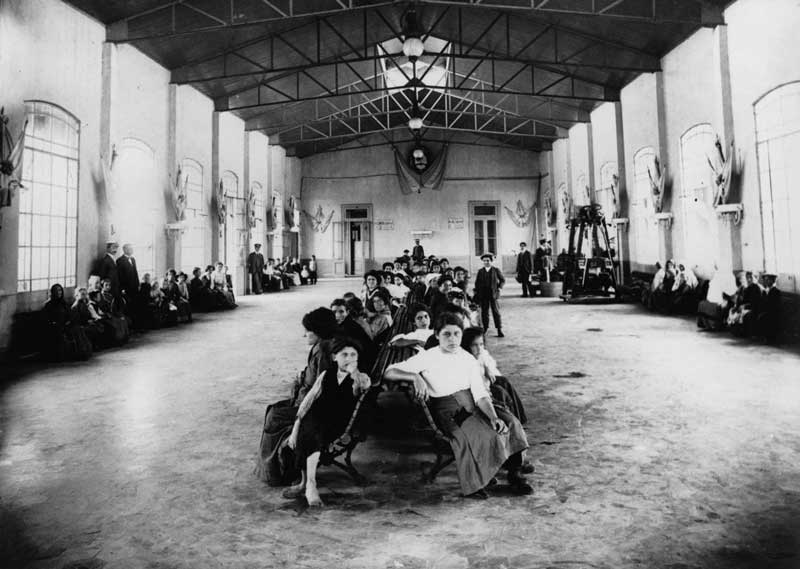
In the late 19th and early 20th centuries, within three decades at least one and a half million Hungarians emigrated to the Americas as settlers or to work in industrial centers. They were not even considered white in the North, but rather Asiatic “hunkies”. 1 Between 1921 and 1924, the United States introduced a strict quota system to restrict immigration from Eastern Europe, so many of them migrated to South America instead. As Ginelli recounts, the racial panic in the USA about an ‘Eastern European invasion’ accelerated the process of black Afro-Americans flocking from the South to the industrial cities of the North, where the African-American civil rights movement could spark out after the Second World War.
The story of the Hungarians who settled in South America is one of the episodes featured in the exhibition. As historical sources reveal, the idea of Hungary establishing colonies on the South American continent, similar to what the Germans, Italians, or Jews did, was an absolute reality at the time. Ginelli says that the importance of “Americaning” (amerikázás) 2 was so definite that even the economic stability of the Austro-Hungarian Empire or even the well-being of some Hungarian villages depended on remittances, whilst emigration was a constant problem for the economy. The issue of Hungarian settlers remained significant even after the Treaty of Trianon in 1920 because, after the dissolution of the Austro-Hungarian Monarchy and the annexation of two-thirds of the Hungarian Kingdom’s territories, many people arrived as penniless refugees to the remaining mother country and became “wagon-dwellers”, forcing a great number of them to move further abroad.
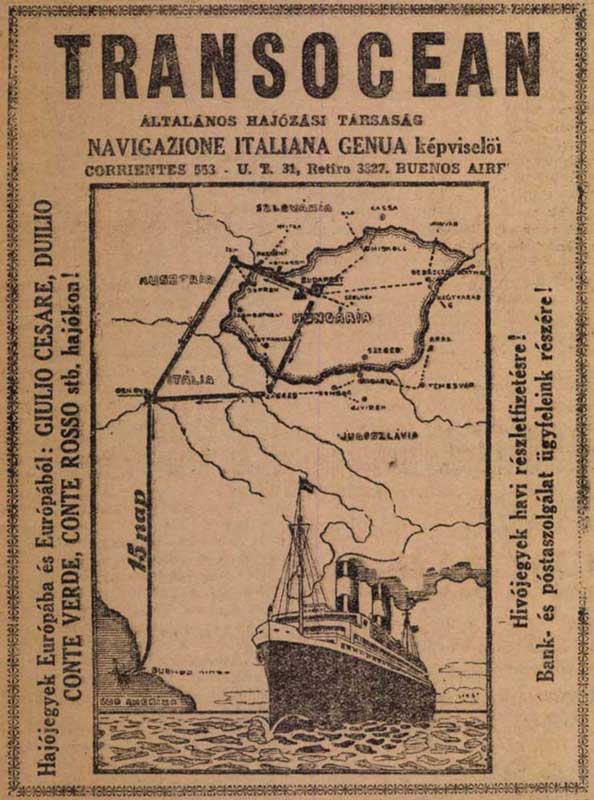
In the interwar era, 80 percent of Hungarians who emigrated to Latin American countries had left the annexed territories. Their departure was supported not only by South American emigration agents but also by the anti-Hungarian nationalist state policies of the Entente Minor. There were Uplanders (Felvidék, from Slovakia), Szeklers and Csángós (Romania) among them, and they established colonies such as Boldogasszonyfalva or Árpádújfalva (Colônia Arpad). 3 The importance of the Hungarian colonies in South America for Budapest was clearly shown by the fact that in 1939, Jr. Miklós Horthy, the son of the Regent of Hungary, Admiral Miklós Horthy, was appointed as ambassador to Brazil. In the period between the two world wars, the idea of organizing a local Hungarian diaspora was an urgent matter. Jesuit monks (Béla Bangha, Zoltán Nyisztor), consuls (Lajos Boglár), declassed aristocrats (György Dadányi), populist ‘folk writers’ (Ferenc Kordás), and even prominent people like Archduke Albrecht Habsburg were actively involved in the life of the Hungarian colonies in South America. Among other things, Ginelli is digitizing the Brazilian collection of the teacher, poet, and sociographer Ferenc Kordás held at the Déri Museum in Debrecen.
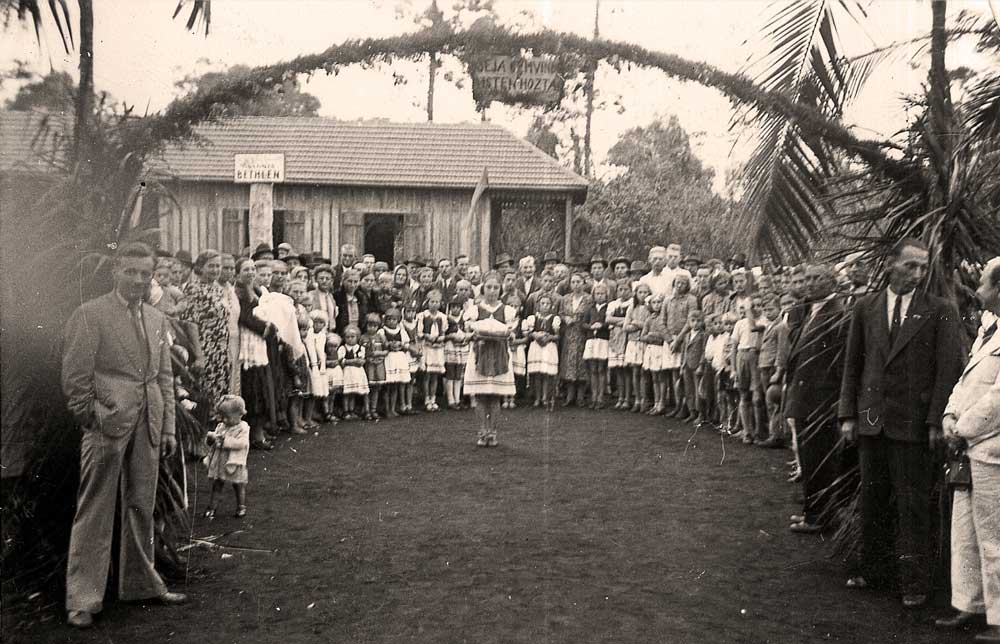
According to the curators, this story shows how Hungarians were very active participants in colonialism. Another episode on display shows how the debates about colonialism in Western capitals seeped into Hungarian cultural life.
In 1921, the French Guyanese black writer in West Africa, René Maran published his novel Batouala in France, which was the first so-called ‘black novel’ (a new genre of black African novels at that time) and became an early influence for the anti-racist and anti-colonialist Négritude movement of the French colonial world. It tells the story of the everyday life of an African chieftain, through which the novel delivers a critique of French colonialism. Batouala sparked a huge scandal in France, after Maran became the first black writer to win the most prestigious French literary award in Paris, the Goncourt Prize. The novel was translated into Hungarian in 1922 by Dezső Kosztolányi, whose anti-Semitic writings had only recently come to light, yet as he was a prime member of the West-centric intelligentsia around the influential Nyugat (The West) journal that was strongly impacted by Parisian culture at the time, Maran’s book could quickly reach the Hungarian audience.

The Hungarian reception of Batouala was just as heated as in the West. Apart from predictable fascist reactions that the naturalistic depictions of “negroes” were an affront to Christian morality, the more progressive authors were not all for the novel either. One of the early village sociographers and filmmakers, Oszkár Damó, whose work was devoted to fighting massive rural poverty, wrote sarcastically in his review that although he understood why this focus was important in the West where “race” had become a “mania”, but in the meantime Westerners ignore the astonishing level of abject poverty in post-Trianon Hungary. “When will they talk about this in Paris?” – raged Damó, and Ginelli deciphers that this post-Trianon sentiment resonates well with the current voices that could be heard in the often dismissive Hungarian reception of the Black Lives Matter movement as something arriving from the West.
Négritude literature at home was also important for the famous Hungarian poet Miklós Radnóti, who turned to African culture because of his own Jewish identity. Radnóti too had strong ties to Parisian culture, and when he visited the French capital in 1931, he regularly visited the Colonial Exhibition, where African tribes were exhibited in the zoo. Ironically, this colonial exhibition, as Ginelli explains, influenced him to translate African poems and write more about oppressed black figures, as rising anti-Semitism in interwar Hungary awakened in him a sense of solidarity. Of course, Radnóti’s gaze was still close to the liberal approach of the times, with a heavy dose of exoticization and sexualization. Yet the Pan-Africanist Négritude movement too proclaimed the need to reach back to African roots and tribal elements.
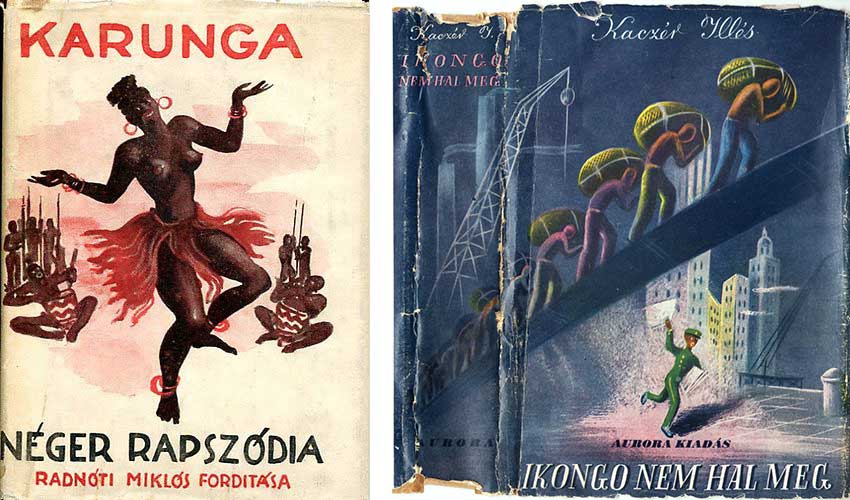
According to Ginelli, this agenda claimed to emancipate Africans, who said “This is where we came from, this is who we are, and these roots are what we have to understand to have an independent culture”. This drove the thought of René Maran and later such African leaders as Senegal’s Pan-Africanist president, Léopold Senghor. The geographer says that their nativism resonated with the pleas of interwar era populist ‘folk writers’ in Hungary: to become independent from the colonial West, Hungarians must first understand our own folk culture. This aspiration sharply contested the global core’s viewpoint, in which semi-peripheral and peripheral communities and cultures can only be understood through the core’s gaze. As Hungarian ‘folk writer’ Gyula Illyés, who was educated in Western, Parisian culture, critically remarked, only if he spoke in French could he be taken seriously. The curators say that similar strategic issues of dependency were raised by the Francophone Négritude movement, which was established by an Atlantic diaspora of a black bourgeoisie with a fundamentally French colonial education.
Eszter Szakács said their curatorial strategy was to present the best-known authors of Hungarian literature in a way we hadn’t seen before: juxtaposed with black authors. Radnóti, for example, was shown alongside Léopold Sédar Senghor, who was an important figure in the Pan-African literary movement and later became the president of Senegal. The exhibition was designed to avoid presenting this theme only from the perspective of Hungarian writers, and will therefore include a film on Négritude shot in 2015 by Manthia Diawara, a Mali-born filmmaker who lives in New York.

Eastern Europe as a colony
The critique of Hungarian ‘folk writers’ is not only related to Négritude in the exhibition. After 1956, many of their protagonists were involved in an anti-colonial rivalry on a global scale. As the curators tell us, after the bloody quenching of the 1956 revolution by the Soviets, the international political floor was shrinking around the communist Hungarian government. One possible way out was to convince the many liberated colonial countries joining the United Nations after 1945 about the legitimacy of new communist leader János Kádár. The global opening after 1956 was also economically vital for Hungary: the sacrificial financing of rapid industrialization and a haunting trade deficit coupled with a grave hunger for foreign currency drove the entire economy into debt and state bankruptcy. The communist leadership tried to cushion this by seeking export opportunities outside the protectionist West of the European Economic Community (1957), such as in the Middle East, South Asia, and West Africa.

These events led to the first Seven-Year Development Plan of Ghana to be drawn up by Hungarians, devised by the economist and former Smallholder Party member József Bognár. Ghana’s rapid development was the great promise of the postcolonial era, until Ghanaian president Kwame Nkrumah was couped with support from the CIA, and the debt crisis bankrupted the newly independent country’s economy. János Fekete, later director of the Hungarian National Bank and well known for facilitating IMF loans to Hungary, was one of the key secret advisers asked to help avoid Ghana’s bankruptcy.
However, the newly decolonized Afro-Asian countries were important not only to the communist Kádár regime but also to the émigrés who opposed the communist leadership at home. A smallholder politician associated with the populist ‘folk writers’, Ferenc Nagy became the first prime minister of the new Republic of Hungary after the Second World War but was forced into American exile by the communist regime of Mátyás Rákosi in 1947. In his emigration, Nagy tried to convince Afro-Asian (post)colonial countries that the Soviet Union was a colonizer and that Eastern Europe was its colony.
As Ginelli explains, Ferenc Nagy took several tours organized by the CIA to persuade South Asian politicians, diplomats, and the population about his arguments of ‘Soviet colonialism’. The Americans deliberately used Eastern European émigrés as authentic critics of the Soviet Union to convey US foreign policy interests in the so-called ‘developing countries’. Ginelli’s research shows that in 1955, when the first major post-colonial Afro-Asian conference was held in Bandung, Indonesia, paving the way for the Non-Aligned Third World, Nagy was integral in bringing the issue of ‘Soviet colonialism’ to the conference agenda through prior discussions with prime ministers Sir John Kotelawala of Ceylon and Jawaharlal Nehru of India. 4

Nehru reappears in a further episode of the exhibition, in yet another rarely remembered story. After the 1956 revolution against the Soviet-backed Rákosi regime broke out, a group of socialist-minded politicians, including the influential statesmen István Bibó and the then young smallholder party member Árpád Göncz (who became President of Hungary in 1990–2000), sought to resolve the crisis through the mediation of India. They contacted the Indian diplomat Mohamed Ataur Rahman, who was committed to Hungary’s democratic aspirations and discussed with him Hungary’s desire to join a socialist ‘Yugoslav path’ with the support of a neutral India. According to Ginelli, the idea was not entirely hopeless, but the invading Soviet troops made all attempts impossible. Göncz and Bibó were arrested and escaped execution thanks to Nehru’s intervention. India’s first prime minister was contacted by Rahman and Hungarian émigrés, such as ex-premier Ferenc Nagy, and asked János Kádár at the UN General Assembly in New York not to execute them.
Ginelli says that their exhibition shows that the 1956 revolution could have offered an attempt to politically break out through the emerging ‘Non-Aligned Movement’, but this ultimately failed.
A special episode in the exhibition is the work of artist Judit Flóra Schuller, who reinterprets the work of her grandfather. Imre Schuller was a Hungarian film director and cinematographer who took part in the first socialist-era expedition to East Africa in 1959–1960. Since the Hungarian National Museum’s African collection was devastated by a fire during the 1956 revolution, the museum’s management decided in 1959 that the losses needed to be replaced. They, therefore, organized a hunting trip to Africa with the declassed aristocrat and star hunter Zsigmond Széchenyi, and Schuller shot a film of the trip entitled ‘We Went to Africa’. Although the country was under socialism at the time, the curators said that the film relied on Western colonial discourses and infrastructure. This is not surprising, since despite the regime’s strong critique of imperialism and the bourgeoisie, the popularity of colonial culture, including hunting novels, remained unbroken even after 1945.5
According to the curators, Széchenyi’s trip could be considered as the first large-scale colonial expedition of the socialist period. Although today it is remembered as an exciting adventure, reports show that it did not go smoothly at all and that the Hungarian hunters only managed to shoot a few animals in a national reserve at the end of the trip due to the already overhunted landscape. In the official narrative, the role of the black hunters, who helped the Hungarian team on the spot, has been overshadowed. Judit Flóra Schuller’s new work for the exhibition from her earlier series looks at what happened on the ground, what misinterpretations were made, and how to reflect on all this from a present-day perspective through a family archive.
Not simply decolonization
Szakács says that the aim of putting together the exhibition was not simply to compile an historical archive, but to connect these themes to the present through the work of contemporary artists. This aspect is reflected, for example, in the film by Angolan-Portuguese-born Mónica de Miranda, which debuts at the OFF-Biennale. It stars a Czech-English woman whose parents met because of the civil war that broke out in 1975. The Angolan civil war, in addition to receiving Cuban aid, also brought soldiers from Eastern European socialist countries, mainly Czechoslovakia, as the Czechoslovaks were involved in the region due to their significant arms exports.

A similar theme is explored in Katrin Winkler’s work on the admission of refugee children from Angola’s neighbor, Namibia to the GDR in the 1980s. Winkler’s film examines how this event is remembered by Africans and East Germans. In these films, the key question is whether it is possible to create a shared memory politics, and tell these stories in a narrative in which both sides can recognize themselves.
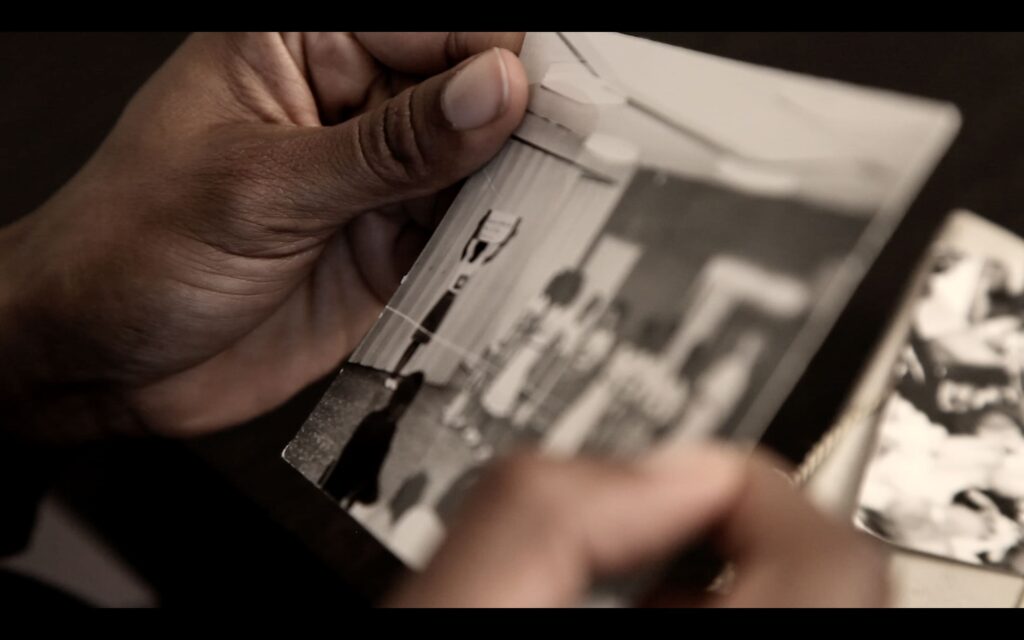
Related to this theme is the exhibition’s material on Afro-Asian students who came to Hungary. During the period of state socialism, various bilateral agreements allowed many visiting students from the so-called ‘friendly countries’ to come to the Eastern Bloc, including Hungary. Yet their stories and memories are hardly part of today’s public discourse. Many of them came to the region, and some of them stayed, but while their links are still alive today, they are seldom mentioned. This theme was explored by Zoltán Ginelli in the case of Hungary, while Bartosz Nowicki looked at Poland.6
The issue of racism immediately comes up in this topic. As Szakács explains, among the works on display is a 1968 Czechoslovak film, researched by Czech art curator Tereza Stejskalová, which was made as an exam film by an Indian student studying film in Prague. It reveals that the propaganda of socialist equality was haunted by local racism since non-white students who came to Eastern Europe were subjected to a lot of harmful discrimination.

The issue of racism also appeared in the case of guest workers coming to Hungary. In the early 1980s, Cuban workers arrived in Hungary in significant numbers. The Cubans were mostly very young and the majority of them were women, because, as Ginelli comments, they were easier to exploit and the increasingly export-led textile industry required cheap labor and delicate hands. This was a key sector through which the country sought to get foreign currency and escape indebtedness. Many of the Cubans entered a big city for the first time in their lives, when they traveled to Havana and flew to Budapest, which came as a radical change for them – suddenly finding themselves in a Hungarian textile factory.
Péter Horváth’s photos depicting these Cuban workers are showcased in the exhibition. The photojournalist Horváth, who had never spoken a word of Spanish, in 1985 visited the Cubans working in the spinning factory in the southern industrial district of Kőbánya in Budapest, with whom he eventually became so close that he began to document their daily lives. The curators presented a selection of these photographs in a critical context, to avoid a white colonial gaze of exoticization and sexualization that was commonplace in the Hungarian press during the socialist period, and which remained a constant feature of the Hungarian public discourse based on these Cuban women for a long time, from the sexist jokes of popular socialist era comedian Géza Hofi to the post-2000s stand up comedian Sándor Fábry.

The Cuban workers left deep traces in local racial memory. Their appearance is linked to the rise of the Hungarian skinhead subculture, just as the imported Cuban orange would become one of the satirical symbols of the collapse of socialist internationalism. Ironically, this symbol back then was criticized by the then liberal and pro-West, now illiberal and anti-West, majority government party of Fidesz, which later chose an orange symbol to express their youthful anti-communism during the 1989 system change. The exhibition project also demonstrates the decline of Hungarian-Cuban relations, which for more than a decade had been a key factor in the lives of many Hungarians, and which diminished when Cuban workers were suddenly sent home with the regime change.
As Ginelli explains, one of the main reasons for these fading relations was indebtedness. Due to the neoliberal turn in the 1980s, the core countries’ development of new technologies and financialization through fictive capital as a reaction to the oil crises led to massive indebtedness in many global peripheries, and the semi-peripheral and peripheral countries began to repay their loans to core countries and to not each other. Hungary, too, has been unable to collect the credits it gave: for example, Iraq under Saddam Hussein received millions of dollars that were never returned. Growing indebtedness and halted investments had led to a series of disconnections between the semi-periphery and the periphery.
Although most Cubans were sent home from Hungary, still a surprising number of them stayed. The exhibition includes an interview film shot by Virág Tyekvicska, Bálint Tolmár, and Zoltán Ginelli, in which Lidia Reina, a Cuban-born woman, explains how she came to work in a spinning mill in Kaposvár as a young girl and why she decided to stay after the fall of communism. The film also talks about how she experienced the sexualization and exoticization of Cuban women and how the government propaganda about migrants in 2015 hit her, even though she had been living in Hungary for a long time.

It would be relatively easy to label the Transperiphery Movement’s exhibition project with the recently so popular adjective of ‘decolonization’, but the curators deliberately avoided openly using this term.
Even though the exhibition is in line with the agenda of decolonization, the project’s aim was not to present knowledge that Eastern Europeans are already familiar with, which is largely defined and mediated by the global core, but to follow in the footsteps of our knowledge. Decolonization has now so permeated the Western cultural and artistic scene that it has become a method practically – and ironically – defined by the core. The curators of the Transperiphery Movement, on the other hand, say that they want to be able to reflect on their situation in Eastern Europe in their own right and through their voices. This is why they are dedicated to their name ‘movement’. Their goal is to continue working with researchers, artists, and curators from both regions to explore the presented issues of dependency, peripherality, and coloniality in dialogue yet outside Westcentric mimicry so that we can finally produce ‘transperipheral’ knowledge on our terms about a global Eastern Europe in the 20th century.
The venue of the exhibition, Fészek Artists’ Club was also featured in one of the exhibition episodes. As Szakács says, in the 1960s, 1970s, and 1980s, thanks to the art historian Éva Molnár, the Fészek Artists’ Club became a place for many young (neo)avant-garde artists who were not supported by the cultural policy of the past. In this context, the ‘World Art Post: International Artist Stamp Exhibition’ organized by György Galántai in 1982 took place at the venue. The materials, compiled from the Artpool Art Research Centre’s archives and curated by Zsuzsa László, show how artists in peripheral positions under authoritarian governments strove to translate their activities through art across Hungary and Latin America – to now become part of the Transperiphery Movement.
Zoltán Ginelli is a geographer working in critical geography and global history, and his main research interest is to examine Eastern Europe’s global colonial history and how Hungary was linked to Afro-Asian decolonization. He says that during his research it came as a revelation for him how Hungary had globalized so early on and in relatively autonomous ways as an active participant in colonial processes.
Eszter Szakács is a curator, art historian, and member of the OFF-Bienniale curatorial team. In recent years, she has met and worked with several curators and artists from the Global South, implemented projects in the Arab world, and has also visited Kenya and Ghana in the framework of a curatorial program to learn about local art initiatives. Through these experiences, she realized that the Global South is a world that has parallels to Hungary.

Bence Horváth is a Budapest based journalist, working at the online portal 444.hu since 2013. He follows and covers topics in foreign policy and arts & culture.
Footnotes
- This topic is explored by the Hungarian documentary film of Péter Forgács, Hunky Blues (2009).
- “Amerikázás” is a now obsolete Hungarian term that carries multiple meanings. First, it referred to migrant work in the USA, including cultures of mobility and a new vocabulary of Hungarian-American terms. Second, it was used to denote laziness and idleness during work, as it derived from workers’ slowdown strikes that became known in Hungary through North America.
- The Szekler (székely) and Csángó people are ethnic Hungarians; the former still live in Transylvania (Romania), the latter near the borderlands of East Transylvania and Western Moldavia on both sides.
- This research is pursued by the Prime Minister Ferenc Nagy Research Group, which Ginelli co-founded in 2020.
- This is explored in: Burton, E., Ginelli, Z., Mark, J. & Radonjić, N. (2023): The Travelogue: Imagining Spaces of Encounter—Travel Writing Between the Colonial and the Anti-Colonial in Socialist Eastern Europe, 1949–1989. In: Kristin Roth-Ey (Ed.): Socialist Internationalism and the Gritty Politics of the Particular Second-Third World Spaces in the Cold War. London: Bloomsbury.
- See some of the featured materials were presented in an interview with Bartosz Nowicki for the New East Digital Archive (former Calvert Journal) on ’Afro-Poland’, and first curated in an exhibition ’Afro PRL: The Image of Africans in Polish Press Photography 1955–1989’ at the History Meeting House (Dom Spotkań z Historią). See also Nowicki’s blog post and dissertation.

